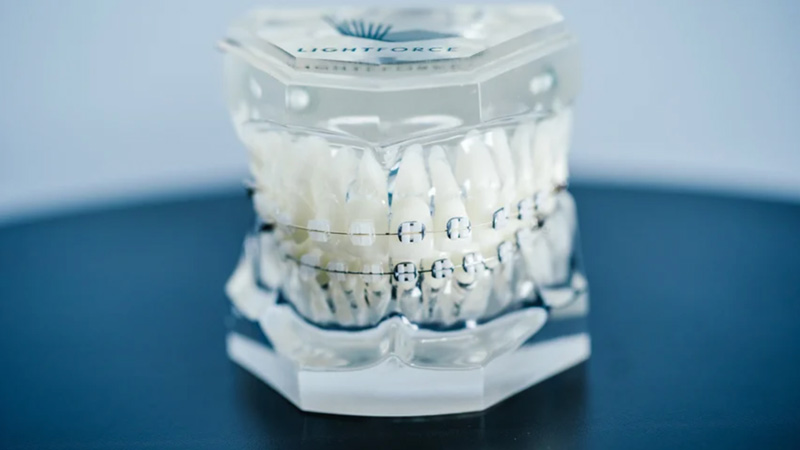What Establishes Cumming Braces and Aligners In Addition To Various Other Orthodontic Treatments
What Establishes Cumming Braces and Aligners In Addition To Various Other Orthodontic Treatments
Blog Article
Comprehensive Overview to Orthodontics Procedures for Correcting Oral Imbalances
In the realm of orthodontics, the journey to achieving a flawlessly lined up smile includes a myriad of procedures customized to remedy dental imbalances. From standard braces to invisible aligners and also medical choices, the field of orthodontics offers an array of options to deal with differing degrees of oral abnormalities. Understanding the complexities of each treatment, including their systems, benefits, and possible disadvantages, is vital in making notified choices regarding one's orthodontic treatment. As we browse via the extensive overview to orthodontic procedures for dealing with dental imbalances, the complex details of each technique will unravel, shedding light on the path towards a unified and functional dental placement.
Orthodontic Procedures Introduction

Normal adjustments and monitoring are vital components of orthodontic therapy to ensure progression is on track and to make any kind of needed adjustments along the method. By undergoing orthodontic procedures, patients can not just achieve a straighter grin however also enhance their overall dental health and feature.
Conventional Dental Braces: Exactly How They Function
When taking into consideration orthodontic therapies for oral misalignments, conventional braces stand out as a time-tested approach for correcting teeth placing. Typical dental braces consist of brackets, wires, and bands that function with each other to apply continuous pressure on the teeth, progressively relocating them right into the preferred positioning.
One secret aspect of how traditional braces job is the process of bone renovation. As pressure is used to the teeth with the braces, the bone bordering the teeth is improved to support the brand-new tooth placements. This renovation is necessary for the lasting stability of the corrected alignment. Individuals will certainly need regular changes at the orthodontist's workplace to guarantee the dental braces continue to apply the right pressure for reliable teeth motion.
Unnoticeable Aligners: Advantages And Disadvantages
These clear, customized trays are virtually undetectable when put on, making them an enticing option for individuals seeking a more visually pleasing orthodontic treatment. Individuals can eliminate the aligners prior to consuming or cleaning their teeth, lowering the threat of food getting stuck in the appliance and simplifying the cleaning process.

Surgical Orthodontic Options
Surgical interventions in orthodontics existing feasible options for resolving complicated oral more helpful hints misalignments that find out here now might not be efficiently resolved with conventional orthodontic treatments. While invisible aligners and standard dental braces can fix several orthodontic problems, particular cases need medical intervention to attain optimal results. Surgical orthodontic alternatives are generally advised for severe malocclusions, considerable jaw disparities, and cases where the underlying bone structure requires modification to achieve appropriate placement.
One typical medical orthodontic treatment is orthognathic surgery, which involves repositioning the jaws to remedy useful issues such as problem talking or chewing. This surgery is typically performed in collaboration with an orthodontist who assists line up the teeth prior to and after the treatment. Surgical orthodontics might also involve procedures to subject affected teeth, get rid of excess periodontal tissue, or reshape the jawbone to produce a much more unified facial profile.
Before considering surgical orthodontic options, clients go through a detailed analysis to establish the need and possible advantages of such treatments. cumming aligners. While surgery might appear daunting, it can significantly improve both the feature and aesthetics of the smile in instances where standard orthodontic company website therapies fail
Retainers and Post-Treatment Care

Failing to comply with post-treatment treatment instructions can result in regression, where the teeth gradually relocate back in the direction of their original placements. Consistent retainer wear, excellent oral hygiene, and normal dental examinations are important for keeping the results accomplished via orthodontic surgery and making certain the lasting stability of the fixed oral placement.
Conclusion
In verdict, orthodontic treatments supply numerous alternatives for dealing with oral imbalances. Surgical orthodontic alternatives are readily available for more severe imbalances. On the whole, orthodontic treatments can properly boost oral wellness and visual look.
As we navigate with the extensive guide to orthodontic procedures for correcting oral imbalances, the complex information of each technique will unfold, losing light on the course towards a functional and harmonious dental alignment. - cumming orthodontics
One of the most typical orthodontic treatments is the use of dental braces, which consist of metal braces and cables that apply mild stress to slowly shift teeth right into the preferred setting.When considering orthodontic therapies for dental misalignments, typical braces stand out as a time-tested approach for remedying teeth positioning. In addition, undetectable aligners may not be ideal for complicated orthodontic issues that call for more substantial teeth motion, as they are generally advised for moderate to moderate situations. Retainers are customized orthodontic tools developed to hold teeth in their corrected settings after the conclusion of orthodontic treatment.
Report this page